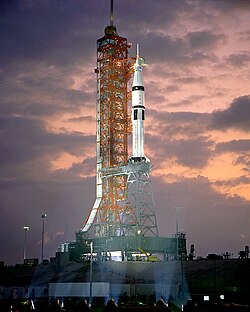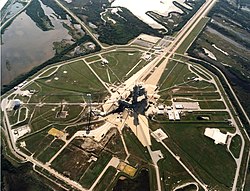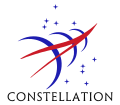| No. | Date | Time (UTC) | Launch vehicle | Shuttle | Mission | Result | Remarks |
|---|
| 6 | 28 January 1986 | 16:38 | Space Shuttle | Challenger | STS-51-L | Failure | First Space Shuttle launch from LC-39B. Intended to launch and deploy TDRS-B for the Tracking and Data Relay Satellite System. A failure of the solid rocket booster led to breakup 73 seconds after launch, causing the Space Shuttle Challenger disaster. |
|---|
| 7 | 28 September 1988 | 15:37 | Space Shuttle | Discovery | STS-26 | Success | First Space Shuttle launch following the Challenger disaster. Launch and deployment of TDRS-3 (as TDRS-C) for the Tracking and Data Relay Satellite System. |
|---|
| 8 | 2 December 1988 | 14:30 | Space Shuttle | Atlantis | STS-27 | Success | Classified Department of Defense mission. Deployment of Lacrosse satellite, also known as USA-34. Shuttle's thermal protection system was extensively damaged during liftoff, but survived reentry. |
|---|
| 9 | 13 March 1989 | 14:37 | Space Shuttle | Discovery | STS-29 | Success | Launch and deployment of TDRS-4 (as TDRS-D) for the Tracking and Data Relay Satellite System. |
|---|
| 10 | 4 May 1989 | 14:46 | Space Shuttle | Atlantis | STS-30 | Success | Launch and deployment of Magellan , aiming to study and create a radar map of Venus. |
|---|
| 11 | 8 August 1989 | 12:37 | Space Shuttle | Columbia | STS-28 | Success | DoD mission. Deployment of SDS satellite and SSF satellite, also known as USA-40 and USA-41 respectively. |
|---|
| 12 | 18 October 1989 | 16:53 | Space Shuttle | Atlantis | STS-34 | Success | Launch and deployment Galileo. Part of the Large Strategic Science Missions, designed to study Jupiter and its moons. First spacecraft to enter orbit of Jupiter and of an outer planet, and first spacecraft to enter the atmosphere of a gas giant with atmospheric probe. First Shuttle launch with an RTG. |
|---|
| 13 | 23 November 1989 | 00:23 | Space Shuttle | Discovery | STS-33 | Success | DoD mission. Deployment of Magnum satellite, also known as USA-48. |
|---|
| 14 | 12 April 1990 | 12:33 | Space Shuttle | Discovery | STS-31 | Success | Launch and deployment of the Hubble Space Telescope. Part of the Large Strategic Science Missions, a space telescope designed to conduct optical astronomy. Collaboration between NASA and ESA. Was serviced five times over the following 20 years. |
|---|
| 15 | 6 October 1990 | 11:47 | Space Shuttle | Discovery | STS-41 | Success | Launch and deployment of Ulysses . Collaboration between NASA and ESA, designed to study the Sun from various inclinations. First spacecraft to enter polar heliocentric orbit, thanks to a gravity assist from Jupiter. |
|---|
| 16 | 2 December 1990 | 06:49 | Space Shuttle | Columbia | STS-35 | Success | |
|---|
| 17 | 5 April 1991 | 14:22 | Space Shuttle | Atlantis | STS-37 | Success | Launch and deployment of the Compton Gamma Ray Observatory. Part of the Large Strategic Science Missions, a space telescope designed to conduct gamma-ray astronomy. |
|---|
| 18 | 5 June 1991 | 13:24 | Space Shuttle | Columbia | STS-40 | Success | |
|---|
| 19 | 7 May 1992 | 23:40 | Space Shuttle | Endeavour | STS-49 | Success | Maiden flight of Space Shuttle Endeavour. Servicing mission for Intelsat 603, following staging failure during launch on a Commercial Titan III in 1990. Only spacewalk so far to feature three astronauts. |
|---|
| 20 | 31 July 1992 | 13:56 | Space Shuttle | Atlantis | STS-46 | Success | |
|---|
| 21 | 12 September 1992 | 14:23 | Space Shuttle | Endeavour | STS-47 | Success | |
|---|
| 22 | 22 October 1992 | 17:09 | Space Shuttle | Columbia | STS-52 | Success | |
|---|
| 23 | 13 January 1993 | 13:59 | Space Shuttle | Endeavour | STS-54 | Success | Launch and deployment of TDRS-6 (as TDRS-F) for the Tracking and Data Relay Satellite System. |
|---|
| 24 | 8 April 1993 | 05:29 | Space Shuttle | Discovery | STS-56 | Success | |
|---|
| 25 | 21 June 1993 | 13:07 | Space Shuttle | Endeavour | STS-57 | Success | |
|---|
| 26 | 12 September 1993 | 11:45 | Space Shuttle | Discovery | STS-51 | Success | |
|---|
| 27 | 18 October 1993 | 14:53 | Space Shuttle | Columbia | STS-58 | Success | |
|---|
| 28 | 2 December 1993 | 09:27 | Space Shuttle | Endeavour | STS-61 | Success | Servicing mission for the Hubble Space Telescope. Notable for correcting its optics caused by incorrect mirror grounding made before launch. |
|---|
| 29 | 4 March 1994 | 13:53 | Space Shuttle | Columbia | STS-62 | Success | |
|---|
| 30 | 9 September 1994 | 22:22 | Space Shuttle | Discovery | STS-64 | Success | |
|---|
| 31 | 3 November 1994 | 16:59 | Space Shuttle | Atlantis | STS-66 | Success | |
|---|
| 32 | 3 February 1995 | 05:22 | Space Shuttle | Discovery | STS-63 | Success | First shuttle mission to the space station Mir . Rendezvoused, but did not dock. |
|---|
| 33 | 13 July 1995 | 13:41 | Space Shuttle | Discovery | STS-70 | Success | Launch and deployment of TDRS-7 (as TDRS-G). Last Shuttle launch for the Tracking and Data Relay Satellite System. |
|---|
| 34 | 20 October 1995 | 13:53 | Space Shuttle | Columbia | STS-73 | Success | |
|---|
| 35 | 11 January 1996 | 09:41 | Space Shuttle | Endeavour | STS-72 | Success | |
|---|
| 36 | 22 February 1996 | 20:18 | Space Shuttle | Columbia | STS-75 | Success | |
|---|
| 37 | 22 March 1996 | 08:13 | Space Shuttle | Atlantis | STS-76 | Success | Docking with Mir . |
|---|
| 38 | 19 May 1996 | 10:30 | Space Shuttle | Endeavour | STS-77 | Success | |
|---|
| 39 | 20 June 1996 | 14:49 | Space Shuttle | Columbia | STS-78 | Success | |
|---|
| 40 | 19 November 1996 | 19:55 | Space Shuttle | Columbia | STS-80 | Success | Longest ever Space Shuttle flight, at 17 days and 15 hours. |
|---|
| 41 | 12 January 1997 | 09:27 | Space Shuttle | Atlantis | STS-81 | Success | Docking with Mir . |
|---|
| 42 | 19 November 1997 | 19:46 | Space Shuttle | Columbia | STS-87 | Success | |
|---|
| 43 | 17 April 1998 | 18:19 | Space Shuttle | Columbia | STS-90 | Success | Final Spacelab flight. |
|---|
| 44 | 29 October 1998 | 19:19 | Space Shuttle | Discovery | STS-95 | Success | Carried senator and Mercury-Atlas 6 veteran John Glenn into orbit. |
|---|
| 45 | 27 May 1999 | 10:49 | Space Shuttle | Discovery | STS-96 | Success | First non-assembly Space Shuttle flight to the International Space Station. |
|---|
| 46 | 23 July 1999 | 04:31 | Space Shuttle | Columbia | STS-93 | Success | Launch and deployment of the Chandra X-Ray Observatory. Part of the Large Strategic Science Missions, a space telescope designed to conduct x-ray astronomy. |
|---|
| 47 | 19 December 1999 | 00:50 | Space Shuttle | Discovery | STS-103 | Success | Servicing mission for the Hubble Space Telescope. |
|---|
| 48 | 8 September 2000 | 12:45 | Space Shuttle | Atlantis | STS-106 | Success | Docking with the ISS. |
|---|
| 49 | 1 December 2000 | 03:06 | Space Shuttle | Endeavour | STS-97 | Success | ISS assembly flight, adding the P6 solar array and radiators. |
|---|
| 50 | 8 March 2001 | 11:42 | Space Shuttle | Discovery | STS-102 | Success | Docking with the ISS. |
|---|
| 51 | 12 July 2001 | 09:03 | Space Shuttle | Atlantis | STS-104 | Success | ISS assembly flight, adding the Quest Joint Airlock. |
|---|
| 52 | 5 December 2001 | 22:19 | Space Shuttle | Endeavour | STS-108 | Success | Docking with the ISS. |
|---|
| 53 | 8 April 2002 | 20:44 | Space Shuttle | Atlantis | STS-110 | Success | ISS assembly flight, adding the S0 truss. |
|---|
| 54 | 7 October 2002 | 19:45 | Space Shuttle | Atlantis | STS-112 | Success | ISS assembly flight, adding the S1 truss. |
|---|
| 55 | 26 July 2005 | 14:39 | Space Shuttle | Discovery | STS-114 | Success | Docking with the ISS. First Space Shuttle flight following the Columbia disaster in 2003. |
|---|
| 56 | 4 July 2006 | 18:37 | Space Shuttle | Discovery | STS-121 | Success | Docking with the ISS. |
|---|
| 57 | 9 September 2006 | 15:14 | Space Shuttle | Atlantis | STS-115 | Success | ISS assembly flight, adding the P3/P4 truss and solar arrays. |
|---|
| 58 | 10 December 2006 | 00:47 | Space Shuttle | Discovery | STS-116 | Success | ISS assembly flight, adding the P5 truss. Final Space Shuttle flight from LC-39B. |
|---|














